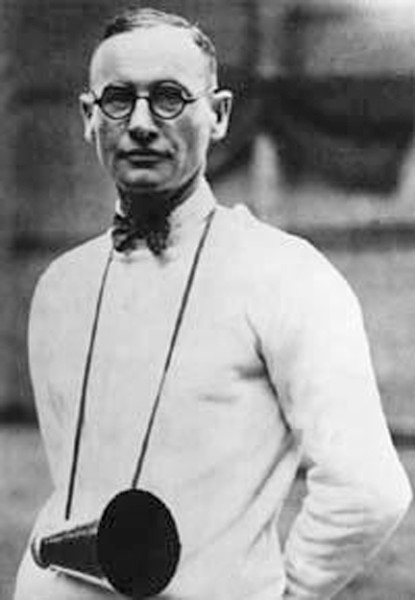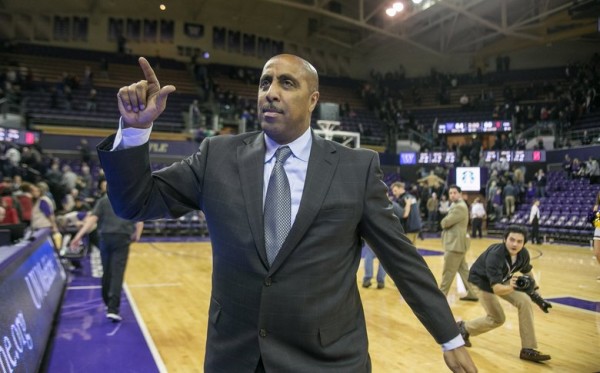Another Golden Age of Washington Basketball Under Lorenzo Romar?
Posted by Andrew Murawa (@Amurawa) on February 2nd, 2016First, a brief history of Washington basketball. The first reported record of the team was 1-1 way back in 1896. In 1902, the Huskies went 7-0. In 1911, Warner Williams coached them to an 11-1 record in the Northwest Intercollegiate Conference. In 1921, Hec Edmundson took over and three years in, earned the first of his 12 conference titles in 27 years as coach of the program while it was in the Pacific Coast Conference (the first amphibian on land in the long evolution of what is now the Pac-12). Of course, the Huskies now play in the Hec Edmundson Pavilion, a building that opened in 1927 but was renamed in 1948 at the end of the long-time coach’s career. However, six years later in 1953, it was Tippy Dye who took the Huskies to the only Final Four in program history. That was the end of the First Golden Age of Washington Basketball, as the team suffered through an NCAA Tournament drought of over 20 years after that Final Four run. There were obvious external reasons for the malaise (the emergence of UCLA and an era where only conference champions were deemed worthy of NCAA Tournament appearance), but Washington basketball slipped off the radar for a long time.
The Second (Brief) Golden Age of Washington Basketball came in the mid-80s, where the Huskies made three NCAA Tournaments in three seasons, with Marv Harshman taking Detlef Schrempf and Christian Welp (RIP) to the Sweet 16 in 1984 (where they lost to a Cinderella #10 Dayton squad in that regional semifinal – sound familiar?). The next two seasons saw the Huskies bow out in the 5/12 game in the first round, once as the #5 seed, once as the #12; the former under Harshman, the latter under first-year head coach Andy Russo. Three more seasons under Russo, three seasons with no Tournament. Four seasons of Lynn Nance also resulted in NCAA misses. Bob Bender was hired in 1993-94 and took a team that went 5-22 in his first season to the first of back-to-back NITs in March of ’96, then back-to-back NCAA Tournaments in ’98 and ’99. The ’98 squad was the Todd MacCulloch/Donald Watts/Deon Luton team that lost a heart-ripper to eventual champion UConn and Richard Hamilton. We’ll go so far as to call that team a part of the Bronze Age of Washington Basketball, but the following three years saw the Huskies finish eighth or worse in the Pac-10, paving the way for Lorenzo Romar, a former two-year player (1978-80) for the Huskies, to be hired in spring 2002.
In Romar’s first season, he helped elevate guard Will Conroy from a guy who averaged 12.5 minutes, 2.5 points and 1.6 assists as a freshman, to a team-leader who averaged 28.7 minutes, 12.7 points, and a team-high 4.0 assists. And yet Conroy was overshadowed by the production and promise of freshmen Nate Robinson (13 PPG) and Brandon Roy (6 PPG in 17 tantalizing minutes per game). That first year was, even though the Huskies missed the NCAA Tournament, the ground-floor of the Third Great Golden Age of Washington Basketball. Robinson played two more seasons in Seattle and helped take the Huskies to NCAA Tournaments in both seasons, including a Sweet 16 in his last. Roy stuck around a year longer and brought the Huskies to another Sweet 16, with the help of freshmen Justin Dentmon and Jon Brockman – two players who would help extend this great stretch of Husky hoops. There were relative low-times in Dentmon and Brockman’s sophomore and junior years, but their careers were bookended by seasons that saw the Huskies win an NCAA Tournament game. And in the year after those two left, Isaiah Thomas, Quincy Pondexter, Venoy Overton, Matthew Bryan-Amaning and company took the Huskies to their third Sweet 16 in a six season span. That trio of Sweet 16’s is more than the program had in the entirety of the 50 seasons in between the 1952-53 Final Four and Romar taking over in 2002-03 season.
College basketball in good conferences back before the NCAA Tournament expanded in 1975 is very hard to compare to modern basketball, especially after the 64-team expansion in 1985. But, basically, if you didn’t read the above paragraphs and got to this point, here’s Washington basketball in fifteen “words”:
Blah, blah, Hec Edmundson, blah. Final Four! Blah. Blah. Schrempf! Welp! Blah. Blah. Blah. ROMAR!
Bring it back to Will Conroy for a second. Way back in 2001-02, Washington basketball was a mess. In Bob Bender’s final season, Conroy was a role player as a freshman on a team that went 11-18 overall and 5-13 in the Pac-10. Bender was fired after the season, three of the five leading scorers left, and it was the little-used Conroy who stepped into a big-time leadership role, producing as much in terms of indefinables as quantifiables for Romar in his first season. Conroy led a team of youngsters on their way towards great things, consistently saving his biggest plays for the biggest moments of the biggest games.
Flash forward 14 years, and Conroy’s back on the bench with Romar. He was hired back in the offseason after his long professional career (with time in the NBA, the D-League and overseas) finally ended. And, as it turns out, it is Conroy’s second time helping Romar with a completely fresh start. Way back when, it was Conroy that helped Romar find his sea legs as a rookie Pac-12 coach. This season, he’s chipping in from the sideline as Romar remakes his roster and begins a fresh assault on what could be the Fourth Golden Age of Washington Basketball. Strangely enough, Conroy is back on board at a very similar time to when both he and Romar got it all started.
Last season, Romar’s future in Seattle felt very uncertain. After an 11-0 start, a home loss to Stony Brook started a downward spiral that saw sophomore center Robert Upshaw be dismissed from the program, the Huskies lose 15 of their final 20 games, and lose a number of players in the offseason. All of this, particularly when taken from the perspective of a late-January top-of-the-PAC viewpoint, seemed destructive to Romar’s future employment at Washington.
This year, six of the team’s top seven scorers are newcomers. Five of those six are freshmen. And, while guys like Dejounte Murray and Marquese Chriss have NBA-upside, nobody on this squad seems likely to depart early. Romar’s Huskies sit on the precipice of being a thorn-in-the-side for Pac-12 opponents for the foreseeable future. Even scarier, this team is far ahead of schedule. This roster’s best days are clearly ahead of it, but the Huskies sit just a game out of first place in the Pac-12 at the halfway mark. That talented collection of freshman have signaled the potential start of another big run for Romar, but like Conroy was a decade and a half ago, it’s again a heady point guard who could be the key catalyst in the revival.

Andrew Andrews Is Having The Type Of Senior Season That We Could Remember Far Down The Road (AP Photo/Elaine Thompson)
Guard Andrew Andrews has had a terrific career in Seattle, one in which he has improved perceptibly every season. He went from a volume-shooting, inefficient bit-player as a freshman to an under-control complementary part as a sophomore. He transformed into a spot-up shooting specialist as a junior, and now this season, into a do-everything, coach-on-the-floor senior. Size, style and demeanor tie Conroy and Andrews together as players on the floor, but it is Andrews’ reprise of Conroy’s role in Romar’s first season all those years ago that gives this Washington team a chance to spark something new. Fourteen seasons ago, Romar could have failed to get the jump-start that the Washington basketball program needed; he could have been relegated to the dust-heaps of past coaches like Andy Russo, Lynn Nance and Bob Bender had been before him. But Conroy wouldn’t let that first Romar team fail. He provided great leadership for a young group of Huskies that would go on to be the most successful group in program history. Now, all these years later, Conroy is back and helping mentor a player who could find a place similar to his in Washington basketball history. Andrews has paid it forward this season, not only playing to such an elite level as to help give this young Washington team a chance for immediate success, but providing the leadership example for the a future group of Huskies who could deliver the program even greater success. So spins the circle of life at Washington.












































